TL;DR
- Most AI app builders impress in demos but falter on day-two needs like migrations, RBAC, and observability.
- Flatlogic survey: 38% use AI generators; top issues are context loss (45.5%) and hidden costs (41.9%).
- Survivability defined by 10 pillars, from safe schema changes and tests to monitoring, portability, and TCO.
- AppWizzy and Cursor lead for production; others skew to prototyping or lack enterprise features.
- Choose platforms with code ownership, CI/CD, and clear pricing to avoid lock-in as you scale.
Fact Box
- Survey of 303 devs in 33 countries: 38% primarily use AI-powered app generators.
- 45.5% cited 'loss of architectural context' as a significant problem.
- 41.9% highlighted hidden or unclear costs as major concerns.
- AppWizzy: Survivability rated High; strong enterprise readiness with minimal vendor lock-in.
- Cursor: Survivability rated High; robust migrations, version control, and code ownership.
“Most AI app builders look magical – until you try to rename a column in production.”
If you’ve ever explored “AI app builders” or “vibe-coding platforms,” you’ve probably asked yourself:
- Which of them actually work beyond the demo?
- Can they survive real-world complexity – roles, migrations, integrations?
- And which ones truly give you control over the code, not just a visual illusion of it?
As Fred Brooks famously said, “The hardest single part of building a software system is deciding precisely what to build.” The same applies to choosing the platform that won’t collapse the moment your users arrive.
The truth is, most AI-powered builders optimize for speed-to-demo, not for day-two survivability. According to our Flatlogic Research on Starting a Web App in 2025, which surveyed 303 developers across 33 countries, 38% of developers now rely primarily on AI-powered app generators. Yet, nearly half (45.5%) cited “loss of architectural context” as a significant problem, and 41.9% highlighted hidden or unclear costs as major concerns. These findings underscore that while AI app builders dominate early-stage workflows, many still struggle to deliver maintainability, transparency, and genuine code ownership once projects scale.
By reading this article, you’ll know which “vibe-coding” platforms can actually ship. We’ll show you our hands-on survivability tests, share real metrics, and reveal which tools are S-tier for production – and which ones should stay in the hype zone.
What Survivability Means Related to Vibe‑Coding Platforms
In vibe‑coding, building an MVP is no longer the hard part – the hard part is what happens after the applause. “Survivability” means that a platform’s output can live, evolve, and scale beyond the first sprint. It’s the difference between a viral demo and a reliable business system.


Below are the 10 pillars that define survivability in AI‑driven app‑building.
Schema Evolution & Safe Migrations
A survivable system treats the database as a living organism – it must adapt without collapsing.
- Why it matters: In production, every new feature (e.g., adding subscriptions, invoices, roles) changes your schema. If your platform can’t generate or manage migrations safely, your app will corrupt data or force manual SQL fixes.
- What to look for:
- Auto‑generated, versioned migration files stored in Git.
- The ability to roll back safely and apply migrations across staging, test, and prod.
- Schema‑diff visualization or checks to prevent drift between environments.
- Cross‑environment consistency – if you can’t reproduce the schema locally, it’s not survivable.
- Red flag: “One‑click deploy, no migrations needed.” That’s a demo promise, not a production guarantee.
Robust Authentication & RBAC
Real systems don’t have a single login – they have hierarchies, privileges, and access policies.
- Why it matters: Without proper role‑based access control (RBAC), every user is effectively an admin. That’s fine for a prototype, catastrophic for a business app.
- What to look for:
- Configurable user roles and permission matrices (Admin / Manager / User / Viewer / Custom).
- Integration with identity providers (OAuth, SSO, SAML, OpenID).
- Token refresh and session expiry policies that prevent “ghost access.”
- Centralized audit logs for access events.
- Survivable behavior: Adding a new user role doesn’t break half your API endpoints.
Automated Tests & Continuous Integration
Speed without tests is fragility disguised as productivity.
- Why it matters: Generated code must still pass tests when you modify it. Without tests, refactors, and AI‑assisted edits become Russian roulette.
- What to look for:
- Generated unit and integration tests out of the box.
- Easy connection to CI/CD tools (GitHub Actions, GitLab CI, CircleCI).
- Consistent environments: same Node, Python, or runtime version locally and in CI.
- Meaningful test names (not random snapshots) – human‑readable failure points.
- Advanced trait: The ability to regenerate or update tests automatically when the schema or endpoints change.
Observability & Monitoring
If you can’t see it, you can’t fix it.
- Why it matters: In vibe‑coded apps, developers didn’t hand‑craft every line, so visibility into runtime behavior is critical.
- What to look for:
- Structured logs with correlation IDs for tracing user actions.
- Built‑in integration or hooks for APM tools (Datadog, Sentry, OpenTelemetry).
- Health endpoints, uptime monitoring, error alerting.
- Log retention and centralized viewing across environments.
- Best‑in‑class behavior: When an error occurs, you get a link to the failing request, trace, and log line – not just a 500 email.
Code Ownership & Exportability
If you don’t own the code, you don’t own the future.
- Why it matters: Many AI app builders trap you inside their runtime. Once you export, things break or depend on proprietary APIs.
- What to look for:
- Full access to the generated repository (no “view‑only” or “build‑only” access).
- Readable, idiomatic code that can be maintained by real engineers.
- Licensing clarity – MIT, Apache, or custom terms that permit modification.
- CI/CD independence – can deploy anywhere (Cloud Run, Vercel, Docker, Kubernetes).
- Survivable sign: If the vendor disappears, your app keeps running.
Day‑2 Workflow & Incremental Change
The second deployment defines maturity.
- Why it matters: Platforms that only handle “create new app” but fail at “update existing app” are toys. Survivable tools embrace change management.
- What to look for:
- Editable schema, logic, and UI components post‑generation.
- Incremental updates are applied without breaking existing features.
- Version control integration for every AI‑made change (commits, diffs).
- Rollback or version history for generated assets.
- Advanced ability: The system detects potential conflicts before merging schema or model changes.
Reliable, Repeatable Deployments
One‑click deploys make demos easy. Repeatable deploys keep companies alive.
- Why it matters: Reproducibility is the backbone of reliability. Every developer, staging, and prod environment must behave the same.
- What to look for:
- Declarative deployment scripts (Dockerfiles, Compose, Terraform).
- Rollback support, blue‑green or canary deployments.
- Environment variable templates and secrets management.
- CI pipeline logs you can audit later.
- Pro tip: If “re‑deploy” means re‑prompting the AI, survivability is zero.
Ecosystem & Integrations
No product survives in isolation.
- Why it matters: The first production friction point is integrations – CRM, payments, email, analytics, and queues.
- What to look for:
- Plug‑and‑play integrations for popular APIs (Stripe, SendGrid, Firebase, Twilio).
- Extendable architecture – webhooks, event bus, or plugin system.
- SDKs or connectors for major databases and cloud services.
- Versioned, documented APIs so external systems can rely on them
- Real‑world signal: A survivable platform can integrate with your billing system without a 20‑message support thread.
Vendor Lock‑in & Portability Risks
Every shortcut has a toll. Survivability minimizes the ransom.
- Why it matters: When your app’s logic lives inside a closed model or runtime, you can’t leave without rebuilding.
- What to look for:
- Open‑source or transparent core components.
- Standard languages (JS, Python, Go) and frameworks (Next.js, Django, Rails).
- Data portability – easy export of DB, assets, and configs.
- Clear exit strategy (documented re‑hosting process).
- Smell test: If pricing or runtime terms change overnight and you’re trapped, it’s not survivable.
Total Cost of Ownership (TCO)
A platform that kills your margin isn’t survivable – it’s just slow suicide.
- Why it matters: Many vibe‑coding tools hide costs behind credits or compute tokens. Those add up fast once you start scaling users or requests.
- What to look for:
- Transparent pricing for AI calls, hosting, and build minutes.
- Ability to use your own OpenAI/Anthropic API keys.
- Forecasting tools or dashboards showing monthly burn.
- Horizontal scaling costs (does your bill double with each new app?).
- Healthy sign: The platform scales cost linearly with your revenue, not exponentially with your usage.
Survivability in vibe‑coding means your generated app behaves like real software: versioned, observable, testable, secure, portable, and cost‑conscious. It’s not about how fast you reach the first deploy – it’s about whether the tenth deploy still works, safely, predictably, and affordably.
A true vibe‑coding platform should deliver both: the vibe of creativity + the discipline of engineering.
TL;TR Top 12+ Vibe-Coding Platforms
Top 12+ Vibe-Coding Platforms Ranked by Survivability
Below, we’ve assessed leading platforms based on their real-world Survivability – the ability to transition from rapid MVP demos to robust production applications.
AppWizzy
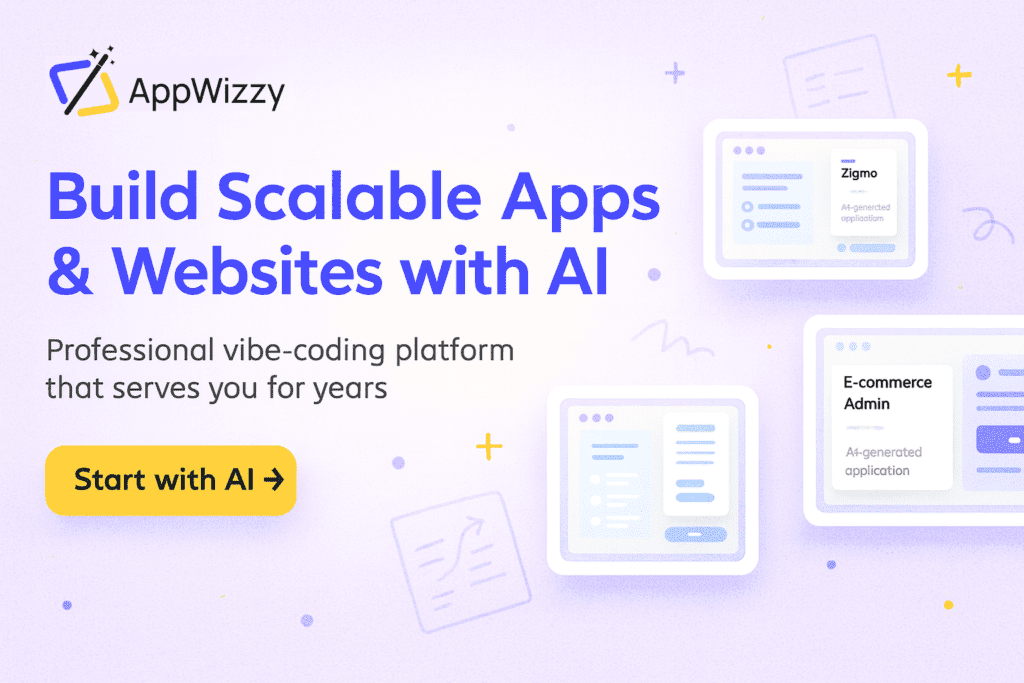
AppWizzy combines professional “vibe-coding” productivity with robust Day-2 operational readiness, emphasizing schema management, RBAC, seamless migrations, full observability, and strong code ownership. Designed explicitly for startups and enterprises aiming for both speed and scalability, AppWizzy supports incremental schema evolution and easy deployment integrations into common enterprise infrastructure.
- Target Audience: Startups, enterprise software teams, product-focused SMBs.
- Key Features: Advanced schema/RBAC management, observability built-in, full code ownership.
- Pitfalls: Requires initial platform familiarity for optimal results.
- Pricing: Subscription-based, flexible enterprise tiers available.
- Survivability: High – strong enterprise readiness with minimal vendor lock-in.
Cursor

Cursor is an advanced AI-powered IDE focusing on developer productivity through natural language commands and project-wide code comprehension. Unlike simpler code-assistants, Cursor deeply integrates with complex codebases, offering robust schema management, precise code refactoring, and exportable, maintainable codebases. Its design is ideal for developers already familiar with VS Code environments, enabling seamless integration into professional workflows. Cursor particularly excels at handling migrations, providing reliable versioning and rollback mechanisms essential for enterprise development. It’s optimized for ongoing projects rather than pure “greenfield” MVP builds.
- Target Audience: Professional developers, established engineering teams.
- Key Features: Natural-language commands, project-wide indexing, robust migration/version control, code ownership.
- Pitfalls: Not suited for non-technical users; requires setup and ongoing dev management.
- Pricing: Free tier available; Pro from ~$20/mo; Teams from $40/user/mo; Enterprise plans custom.
- Survivability: High – excellent schema management, code ownership, and mature workflows.
GitHub Copilot

GitHub Copilot, leveraging OpenAI’s powerful models, provides intelligent code suggestions directly within editors like VS Code. It’s widely popular due to seamless integration into developers’ existing workflows, providing auto-completion, debugging assistance, and automated boilerplate generation. However, Copilot primarily excels at enhancing individual developer productivity rather than generating complete full-stack applications from scratch. Its role in large-scale schema migrations or RBAC implementations is limited, making it best as a complementary tool within an established dev stack rather than a standalone platform for MVP-to-production workflows.
- Target Audience: Individual developers, professional development teams.
- Key Features: Code auto-completion, debugging assistance, seamless integration with VS Code and GitHub.
- Pitfalls: Limited capability for full-stack scaffolding; less support for complex backend logic.
- Pricing: From $10/month per individual; enterprise pricing available upon request.
- Survivability: Medium-High – powerful code productivity boost, but lacks full-app management.
Replit Agent
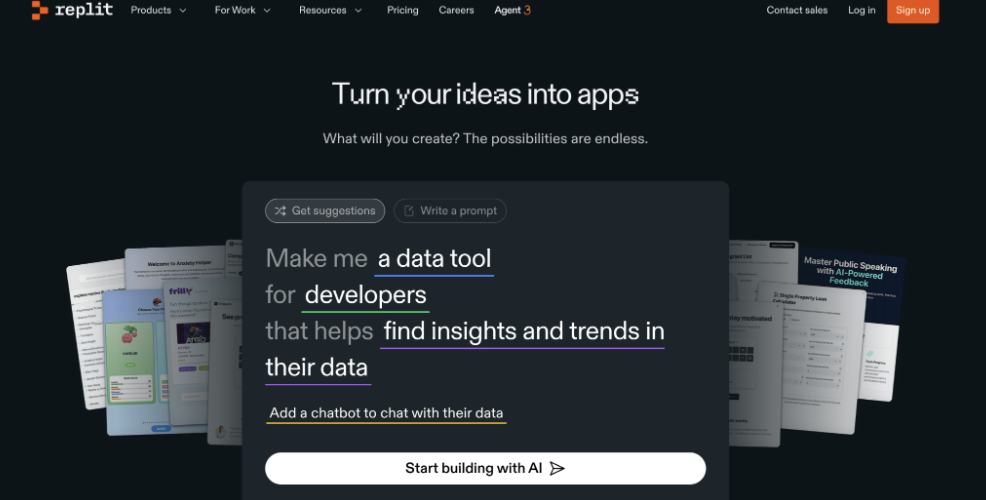
Replit Agent is an AI-powered full-stack environment allowing rapid browser-based app building with AI assistance. It offers instant cloud deployments, easy collaboration features, and an agentic AI model capable of generating application scaffolds from user prompts. Ideal for rapid prototyping and learning scenarios, Replit Agent quickly brings ideas to life. However, production-level features like advanced RBAC, deep observability, or complex schema migration management may require additional manual configuration. Replit’s collaborative online IDE and built-in hosting make it highly attractive for fast MVP deployments.
- Target Audience: Solo developers, early-stage startups, coding educators.
- Key Features: Browser-based IDE, instant deployment, collaborative features, AI-driven scaffolding.
- Pitfalls: Lacks advanced enterprise-grade migrations, observability features; potential vendor lock-in.
- Pricing: Free tier; Core plan at ~$20/month; Teams ~$35-40/user/month; usage-based add-ons.
- Survivability: Medium – excellent for quick starts, moderate complexity, but requires extra work for scale.
Lovable
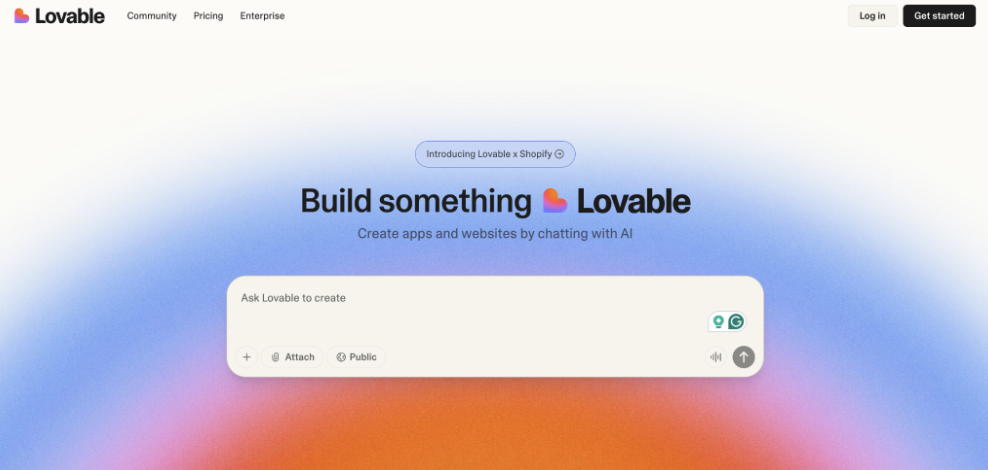
Lovable is a conversational-style AI builder designed specifically to empower non-technical founders and product managers to rapidly build web apps from plain English. Its intuitive visual editing, built-in hosting, and ready-to-use integrations accelerate MVP development. Lovable emphasizes accessibility over technical depth, targeting users without deep coding experience. Yet, for complex, highly customized projects, Lovable’s simplicity can become a constraint, with limited options for advanced schema management or comprehensive testing workflows. Heavy use can also rapidly deplete monthly credits.
- Target Audience: Non-technical founders, product managers, startups.
- Key Features: Conversational interface, visual editing, built-in hosting, basic RBAC.
- Pitfalls: Limited depth for complex apps; potential scalability and credit-usage issues.
- Pricing: Free plan available; Pro from ~$25/month; Business from ~$50/month; Enterprise custom.
- Survivability: Medium-Low – easy start, but struggles with complex app lifecycle management.
v0 by Vercel
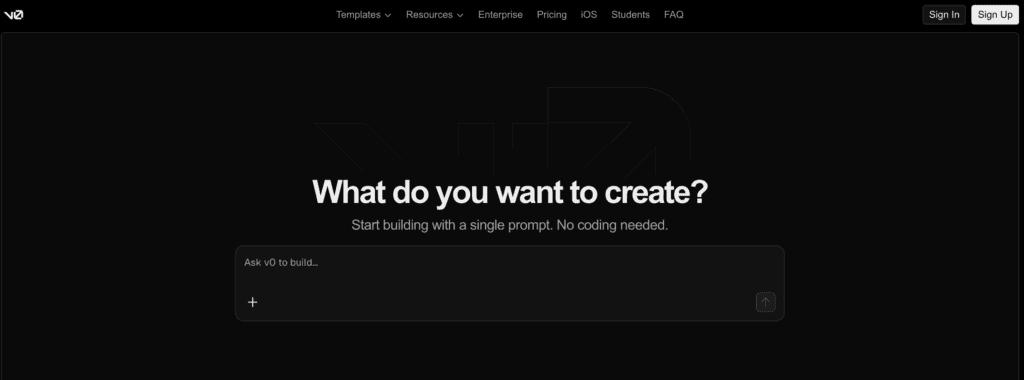
Vercel’s v0 emphasizes rapid front-end web application development using AI-generated components tailored specifically for Jamstack deployments. It excels at intuitive UX/UI prototyping, instant deployments, and seamless frontend integrations. However, v0 is predominantly frontend-oriented, which makes it less suitable for projects requiring deep backend functionality or extensive enterprise-level data management. While excellent for fast product iterations, teams requiring detailed schema management or complex business logic integration might find it limiting.
- Target Audience: Front-end developers, Jamstack enthusiasts, and early-stage startups.
- Key Features: Rapid front-end prototyping, Jamstack deployment, AI-driven UI generation.
- Pitfalls: Limited backend capability, weaker Day-2 operations for complex business logic.
- Pricing: Freemium; Pro plans typically ~$20-30/mo; Enterprise tiers custom-priced.
- Survivability: Medium-Low – great for frontend MVPs, limited for backend-intensive apps.
Bolt.new
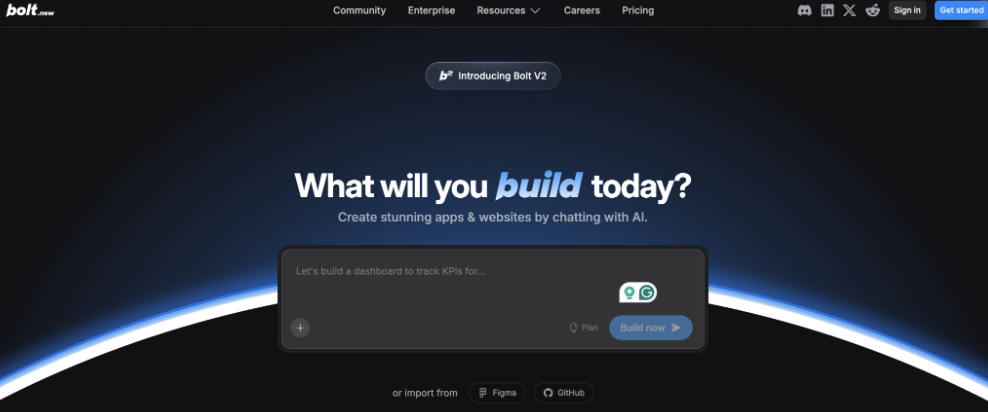
Bolt.new, from StackBlitz, allows developers to create full-stack React/JavaScript apps instantly via natural language prompts, including importing designs from Figma or GitHub. It offers straightforward cloud deployment and collaboration, providing exceptional speed for MVP prototyping. While highly convenient and quick, Bolt.new can face challenges with complex business logic, large-scale schema migrations, or long-term app maintenance. The token-based pricing can quickly escalate costs, making long-term scalability potentially expensive.
- Target Audience: Technical founders, solo developers, startup teams focused on rapid prototyping.
- Key Features: Natural-language app generation, design import, and quick cloud deployments.
- Pitfalls: Cost escalates quickly; limited advanced schema and logic management.
- Pricing: Free tier; Pro ~$25/mo; higher tiers $50-$200/mo based on token usage.
- Survivability: Medium-Low – strong early prototyping, weaker complex lifecycle management.
Windsurf

Windsurf provides a balanced mix of AI-driven web app scaffolding, collaboration tools, and ready-made integrations aimed at small to medium-sized businesses and startups. It offers solid productivity gains through quick scaffolding and basic operational workflows. However, Windsurf lacks certain enterprise-level features, such as advanced RBAC, robust migrations, and in-depth observability tools. Its simplicity is both an advantage and a limitation, potentially constraining larger or more complex projects.
- Target Audience: SMBs, startup developers, and agile teams.
- Key Features: AI scaffolding, collaboration, and pre-built integrations.
- Pitfalls: Missing advanced enterprise features; less robust observability and migrations.
- Pricing: Generally $20-50/month per user, custom enterprise pricing available.
- Survivability: Medium – suitable for small-scale production; limited at enterprise scale.
Claude Code
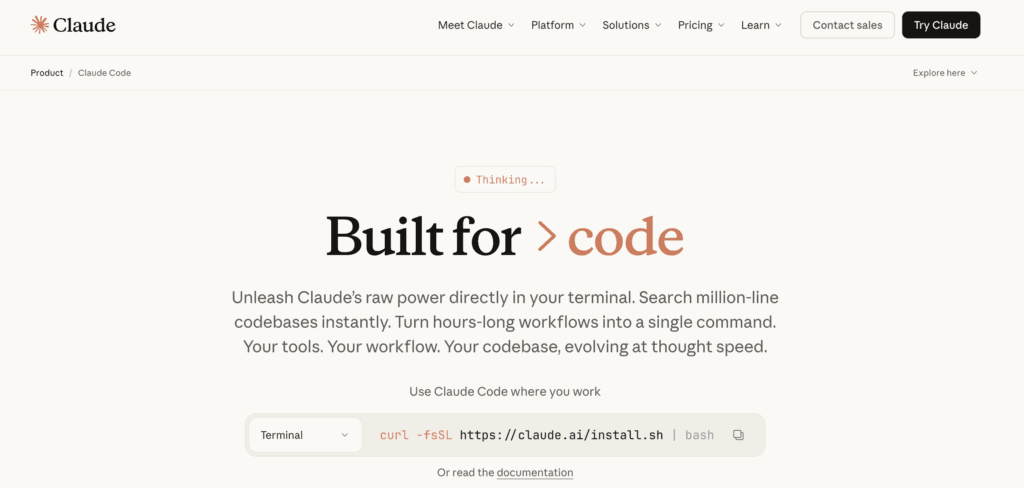
Anthropic’s Claude Code targets enterprise-scale engineering teams, providing powerful AI-driven code generation and refactoring capabilities. It excels at analyzing and manipulating large codebases, significantly boosting developer productivity. However, it lacks integrated app lifecycle management tools like built-in deployments or observability solutions. Its advanced features come at a premium cost, making it better suited for larger teams with substantial resources.
- Target Audience: Enterprise engineering teams, large-scale codebase maintainers.
- Key Features: Powerful code generation, large-scale refactoring, enterprise-grade support.
- Pitfalls: High cost, lacks integrated app management features.
- Pricing: Typically from ~$200/month upwards; custom pricing for enterprises.
- Survivability: Medium-High – excels in productivity, but requires significant manual ops.
Cline

Cline is an agent-first AI coding tool built primarily for developers who prefer granular control and flexibility. It supports multiple AI models, including proprietary and open-source, allowing developers to seamlessly integrate advanced code-generation and refactoring directly into their existing workflow. Cline is especially strong at performing multi-step coding tasks and extensive codebase reasoning, offering developers more advanced AI-driven productivity compared to basic code assistants. However, it lacks the built-in tools required to fully manage schema migrations, deployment, RBAC, and enterprise-scale observability. Thus, while powerful, it’s more suited for small to medium-scale projects or supplemental coding rather than comprehensive application development.
- Target Audience: Experienced developers, engineering teams comfortable managing their own operations.
- Key Features: Multi-model support, full-codebase indexing, CLI integration, and self-hosting capabilities.
- Pitfalls: Minimal built-in infrastructure support, limited scalability for full-stack or enterprise-level deployments.
- Pricing: Free tier for individuals, paid team plans around $20/user/month, enterprise pricing available upon request.
- Survivability: Low – limited built-in production-readiness, demanding significant manual setup and operational work.
Supermaven
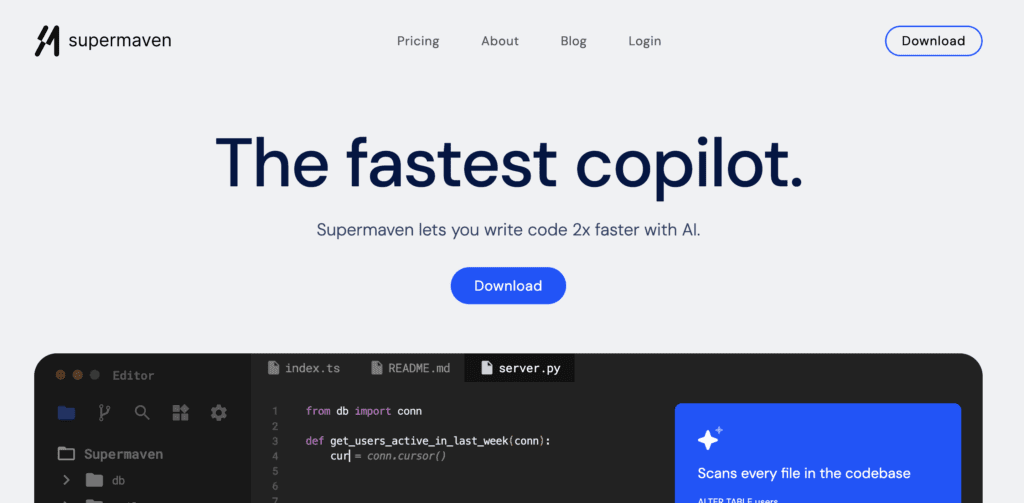
Supermaven provides an advanced AI-driven coding assistant embedded directly into popular IDEs such as VS Code and JetBrains. Its standout feature is its large context window, capable of comprehending and suggesting code changes across large codebases. Supermaven effectively boosts individual developer productivity with smart code completion, refactoring assistance, and real-time suggestions. However, it doesn’t natively offer scaffolding for complete applications, built-in deployment, schema migrations, or role-based access control management. Consequently, it’s ideal as a productivity-enhancing tool rather than a standalone platform for production-ready, full-stack applications.
- Target Audience: Individual developers, agile teams seeking productivity gains within existing projects.
- Key Features: IDE integration, large context window, real-time code suggestions, refactoring assistance.
- Pitfalls: Limited support for lifecycle management, schema management, and comprehensive deployment pipelines.
- Pricing: Free basic tier available, pro-tier around $10/month, team plans similarly priced per user.
- Survivability: Low – excellent developer support, but not designed for complex production app management.
OpenCode
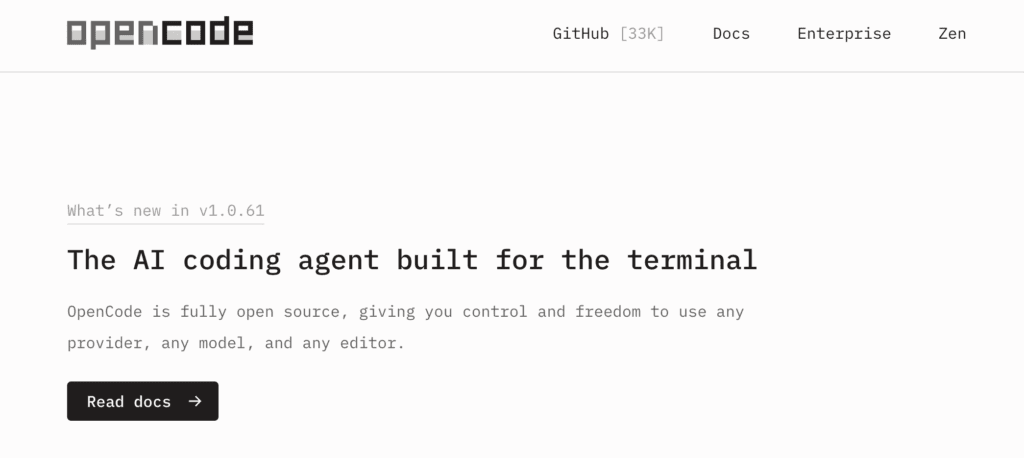
OpenCode is an AI-driven, open-architecture code-generation platform emphasizing flexibility, customizability, and minimal vendor lock-in. It empowers developers to rapidly scaffold application prototypes with AI, then take full ownership of the resulting codebase for ongoing customization and self-hosting. The platform’s openness allows significant freedom in infrastructure choices, but it comes at the cost of polish, integration depth, and built-in lifecycle management tools. Teams choosing OpenCode will likely need considerable manual effort in schema migration management, observability tooling, and operational setup, making it more suitable for technically sophisticated teams prioritizing flexibility over immediate turnkey solutions.
- Target Audience: Technically skilled startups and teams, developers who value full code ownership and control.
- Key Features: Exportable and self-hostable code, minimal vendor dependency, flexible infrastructure choices.
- Pitfalls: Requires manual operational setup, fewer ready-to-use enterprise integrations, and limited out-of-the-box production readiness.
- Pricing: Generally open or custom pricing, varying by deployment and hosting needs.
- Survivability: Medium-Low – good control and flexibility, but lacks comprehensive enterprise-level operational features.
Base44
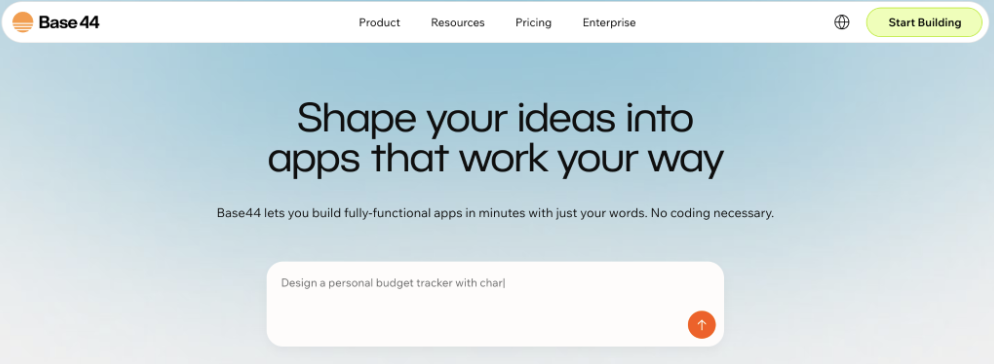
Base44 enables rapid web app prototyping through natural language input, generating full-stack apps including frontend, backend, authentication, and database configurations. Designed primarily for speed and ease-of-use, Base44 appeals greatly to non-technical founders and product teams who want to quickly validate ideas or build internal tools. While exceptional for creating initial prototypes, Base44 struggles with advanced app lifecycle management tasks like detailed RBAC, scalable schema migrations, and robust observability. Teams aiming to scale beyond early stages may encounter limitations, prompting migrations or re-architecting efforts down the road. Its ease-of-use and speed are compelling for short-term projects, but less optimal for long-term enterprise-scale production.
- Target Audience: Non-technical founders, startups, early-stage teams, rapid prototypers.
- Key Features: Natural language-based app generation, built-in hosting, authentication, and basic integrations.
- Pitfalls: Limited advanced production capabilities, scalability concerns, and potential hidden costs at scale.
- Pricing: Free tier available; starter tiers approximately $20/month, pro tiers around $100/month, higher usage tiers scaling upwards.
- Survivability: Low – outstanding for rapid prototyping but lacking robust tools for long-term production management.
Conclusion: The Real Test is Survivability
Navigating the world of AI-powered “vibe-coding” platforms is exciting but fraught with pitfalls. While dazzling demos and rapid prototyping capabilities grab attention, it’s the hidden costs of maintenance, scalability challenges, and architectural constraints that truly define a platform’s value. As our analysis clearly illustrates, not all AI app builders are created equal-especially when it comes to surviving the transition from initial prototype to sustainable, scalable production application.
Platforms like AppWizzy and Cursor stand out precisely because they combine rapid AI-driven workflows with robust production readiness, empowering teams to evolve their apps safely over time. Conversely, platforms focused solely on the initial MVP stage often leave you with significant technical debt, limited flexibility, and hidden operational costs.
Ultimately, choosing the right vibe-coding tool isn’t about how quickly you can deploy a prototype; it’s about how confidently you can manage, scale, and evolve your application long after launch day. Prioritizing survivability ensures your AI-generated app isn’t just impressive at first glance but continues to deliver reliable performance and genuine business value well beyond the hype.
If you’re ready to build production-ready software powered by AI-without sacrificing long-term sustainability, explore how Flatlogic can deliver tailored solutions to accelerate your business growth.